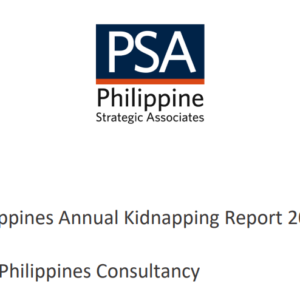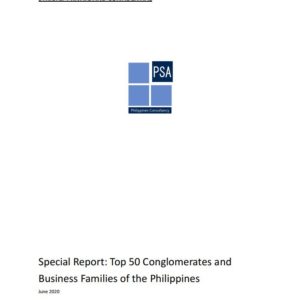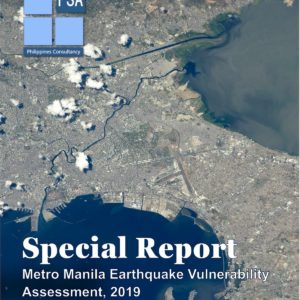Philippines Kidnapping Overview 2017
$250.00 – $300.00
Kidnapping for ransom (KFR) in the Philippines is a persistent problem that affects most regions of the country. While it is difficult to compile cross-national statistics on phenomena like kidnapping, most analyses put the Philippines in the top 10% of the worst countries. However, the distribution of cases within these countries is very uneven. PSA records 118 incidents for 2017, but by some accounts there are thousands of cases in Mexico each year, and several hundred in unstable parts of the Middle East. Even considering the possibility that only one fourth of all cases are recorded in PSA’s methodology, this still places the Philippines somewhere behind the most dangerous countries. As such, many organizations rate the KFR risk in the Philippines as “high” but not “severe.”
Description
Executive Summary
In 2017, PSA recorded kidnapping incidents involving 195 victims, 25 of whom (just under 13%) were ultimately killed. The 117 total kidnapping incidents in 2017, represents a 55% increase in total incidents from 76 in 2016. However, the number of total victims rose less than 5% from 186 in 2016 to 195 in 2017. Last years’ PSA Kidnapping Report noted a significant increase in the rate of victims per incident, which was about 2.5 per attack. This represented a departure from the more typical rate of under 2 victims per incident. With 1.67 victims per incident in 2017 appears to reflect a regression to the longterm trend.
2016 was further notable for the vast numbers of maritime attacks. Whereas no abductions from vessels at sea were recorded in 2015, in 2016 there were 18 maritime attacks targeting 61 victims – 29 Indonesians, 13 Malaysians, ten Filipinos, six Vietnamese, two Germans and one Korean. 51 of the victims were foreigners, all of whom were seafarers. It is believed that the ASG or its affiliates were responsible for all the maritime attacks. The higher victim to incident rate seen in that year may be partially attributed to the modus operandi of maritime attacks, which by their very nature, typically present kidnappers with multiple victims aboard a target vessel. In 2017, maritime attacks dropped 78% to just 4 incidents, involving 17 victims (down 72%). That maritime attacks have dropped significantly in 2017 probably helps account for the corresponding decrease in the rate of victims per incident back to ‘normal’ levels.
Despite the sharp decrease in piracy, kidnap for ransom (KFR) as a whole remains a significant risk in the Philippines and this is underscored by the sharp increase in total incidents over the previous year. We believe that the sharp decline in maritime attacks in 2017 is directly attributable to the outcome of the 2017 Bohol Clashes (11 April-15 May, 2017), wherein one of ASG’s most ambitious cells was essentially wiped out by authorities. 11 members of the ASG, led by, Muammar Askali (nom de guerre: Abu Rami) as well as sub-commander Joselito Melloria (Abu Ali) were killed and their remaining associates were arrested. PSA notes that the ASG perpetrated three maritime attacks before the Bohol clash, while only one maritime attack was conducted by the ASG after the Bohol affair. However, this incident did not have a significant impact on the overall volume of ASG kidnappings when including non-maritime incidents in the Sulu Archipelago. In fact, ASG activity actually increased after the Bohol incident: ASG perpetrated seven kidnapping incidents with 17 victims from January-May, while from June-December the group committed ten attacks with 31 victims.






